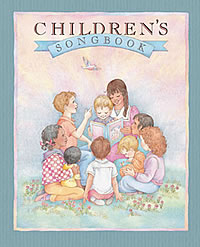Are you interested in writing a children’s song for the Church’s recently announced new songbook for children? In this interview the prolific LDS children’s song writer Vanja Watkins said that a dissertation written by one of her former professors helped her immensely with her song writing process. Criteria for Selection of Children’s Songs in the Church of Jesus Christ of Latter-day Saints by Lue S. Groesbeck was written in 1966 but is still applicable today.
The following are 19 criteria that a panel of Church leaders, Church musicians, and non-LDS musicians felt were important to consider when writing children’s songs. These were later used to select music for Church publications:
- Is the range of the song suitable for children’s voices?
- Does the melody begin on a scale degree that will establish tonality and be comfortable to sing?
- Does the melody create patterns of tension and release through careful use of the active scale tones and their resolutions?
- Are large skips followed be a reversal of direction?
- Are skips of augmented or diminished intervals and extensive use of chromatics avoided?
- Does the melody fit the expressive meaning of the text?
- Are high tones and sustained tones of the melody on extensible vowels of the text?
- Does the melody complement the mood of the text?
- Does the form of the melody contain a balance of repetition and contrast in its melodic, rhythmic, and harmonic movement?
- Are musical phrases clearly defined by an appropriate cadence?
- Does the length of the phrases permit children to breath normally?
- Does the rhythm of the melody match the rhythm of the text?
- Does the tempo of the rhythm change with the general emotional trend of the text?
- Are extremes in dynamics avoided?
- If dynamics are used, do they follow the emotional curve of the words?
- Is the harmonic motion of two-part songs confined to the common practices used in oblique or parallel motion? (examples: descants, rounds, thirds, or sixths)
- Does the accompaniment reinforce the expressive qualities of the melody?
- Does the accompaniment involve the common usage of the 18th and 19th century voice leading?
- Does the song represent a skillful and intelligent use of all poetic and melodic qualities?
These criteria contain a lot of musical jargon. We would love to explain any of them in more depth if you would like more clarification. Please comment below or send us a message through or contact page. We look forward to hearing from you!
